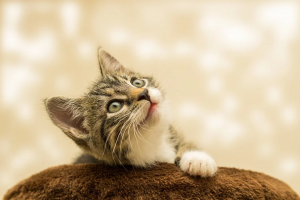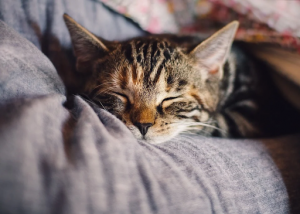 Nothing is more important than your family’s health, two-legged and four-legged family, and perhaps there is something in your home that you’ve been overlooking: your cat’s litter! Having a cat means you have a litter box in the house too, but have you ever given it enough thought?
Nothing is more important than your family’s health, two-legged and four-legged family, and perhaps there is something in your home that you’ve been overlooking: your cat’s litter! Having a cat means you have a litter box in the house too, but have you ever given it enough thought?
A dirty litter box is problematic to the cat first, potentially resulting in urinary tract infections, bladder inflammation, and possibly even kidney blockage however, a dirty cat litter box can also pose significant health problems to other family members, so you need to look into solutions.
Dangerous Microbes
There are actually several risks to your family’s health from your cat’s litter. One of the first things to consider are the microorganisms a human body can get from feline friends. Cat urine and feces can carry certain disease-causing bacteria, particularly Salmonella (the causative agent of Salmonellosis) and Bartonella henselae (the causative agent of cat scratch fever). These bacteria can be found in your cat’s litter and insufficient cleaning of the box can result in your cat getting these bacteria on their paws, and ultimately…all over your house!
Aside from bacteria, cat feces may also contain parasites and worms hookworms and roundworms. Additionally, Toxoplasma gondii – the causative agent of Toxoplasmosis, can be dangerous for pregnant women and and result in birth defects in their unborn fetus. Antibiotics can control Toxoplasmosis, so if you are pregnant, talk to your ObGyn and let him or her know you have a cat in the house.
Unsafe Air

Another risk from cat litter in your home is a chemical risk – overexposure to ammonia. Cat urine and feces both contain ammonia, a potentially toxic gas composed of nitrogen and hydrogen. Intestinal bacteria produce ammonia which is expelled from your cat’s body. In low concentration and with proper ventilation, ammonia should not pose much of a problem however, too much ammonia can lead some humans to feel queasy or endure headaches. In some cases, serious respiratory problems can result.
Choosing an appropriate litter can make sanitation easier. Clay litter is the most common and least expensive, but it does have several problems. Aside from its environmental impact (this kind of litter has been known to be dangerous in marine ecosystems), it is dusty! Although it may only cause mild irritation to some people, this dust can cause severe respiratory problems to people with more sensitive immune systems. This dust is dangerous because it carries sodium bentonite – the chemical that helps the litter clump. While this chemical makes it easy to clean litter up, it is unfortunately a known health hazard.
Cancer Potential
Unfortunately, some litters contain carcinogens! Crystalized litters are more absorbent, but some clay litter products contains cobalt chloride. Manufacturers use cobalt chloride as a dye to indicate the moisture level of the litter, but cobalt chloride is a known carcinogen, so read labels and avoid products containing this harmful chemical.
Conclusion
Cats make great pets and really are members of the family, but it takes work to make sure your cat and the rest of the family stay safe. Hopefully you are now more familiar with potential dangers, but read labels and continue to keep up on product details, and for your family’s safety, scoop the litter daily, change and clean the box as often as needed, and consider the type of litter as well as determining a well-ventilated located for your kitty’s box. Be aware that good litter box hygiene can keep your furry best friend healthier too!








